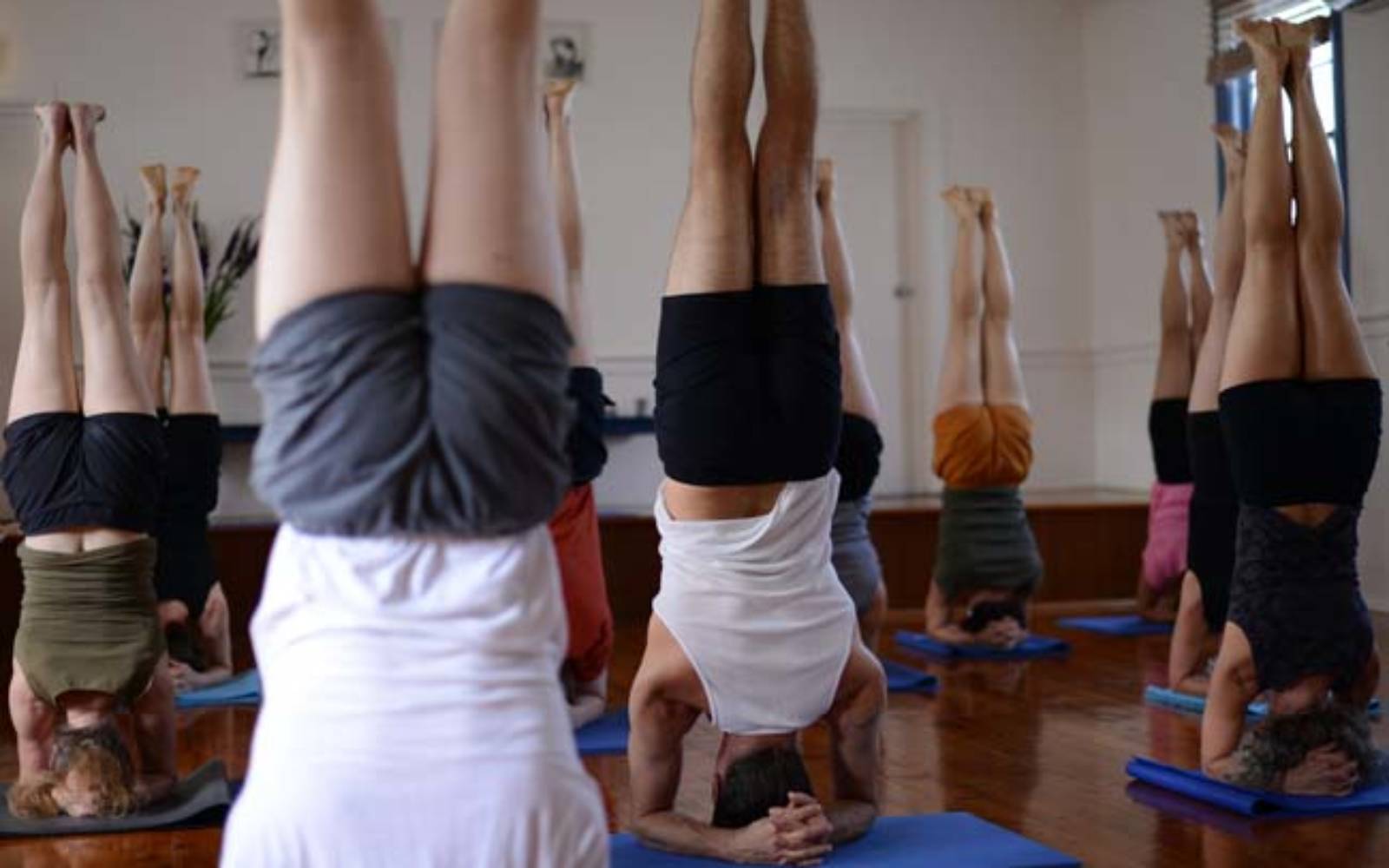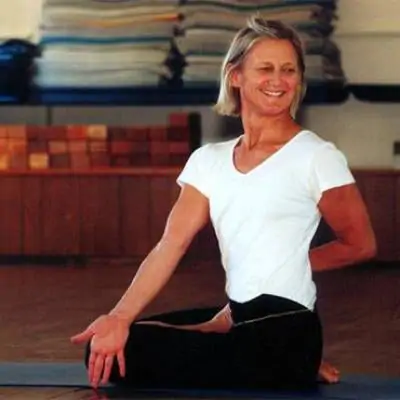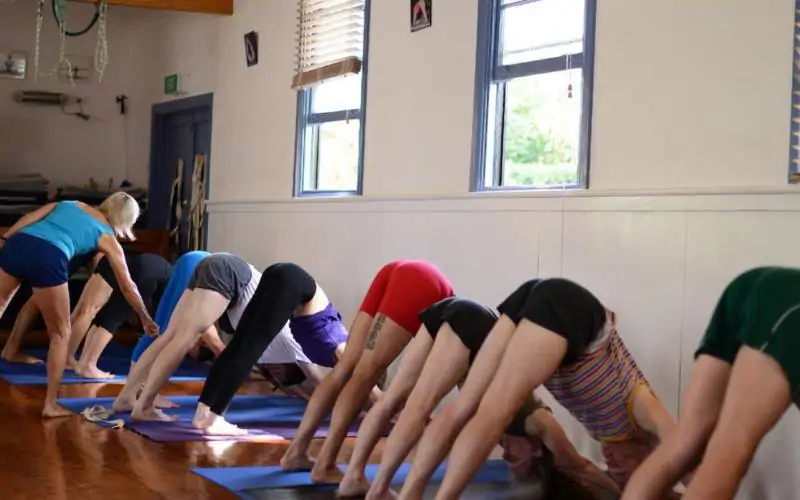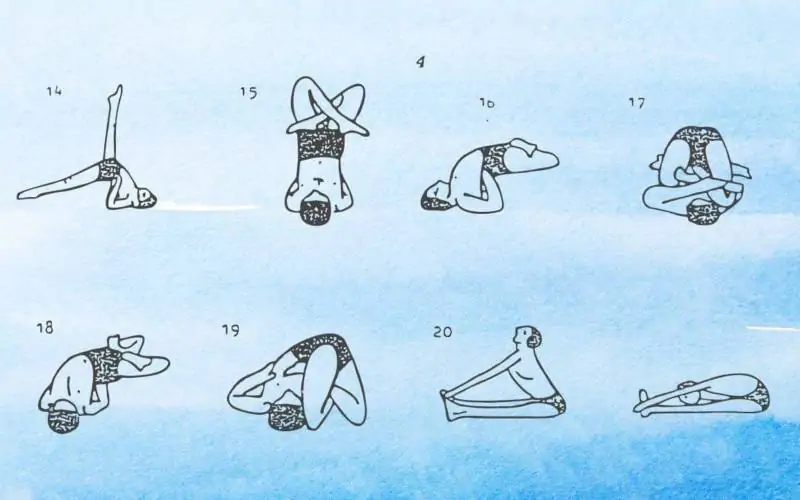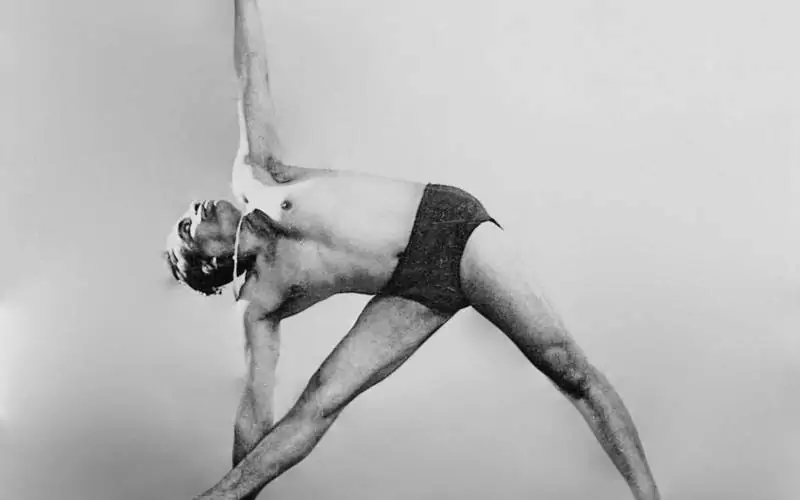The inverted postures bring about good health and wellbeing, from the inside out. Head-balance primarily affects the brain and helps to develop a vigorous body, a strong spine and a disciplined mind. Shoulder-stand offers some of the same benefits but gives more of a feeling of peace.
Why do we practice inverted postures?
Anyone practising Iyengar Yoga will have noticed the importance given to the various inverted postures and how these postures form a part of every sequence in every class. Some students are pleased and enjoy them; others struggle with finding the right alignment for their neck or shoulders and perhaps wish there was less of this particular type of Asana.
Why place such emphasis on these poses?
Headstand and shoulderstand were considered by Mr Iyengar to be the centrepieces of yoga practice. They are often somewhat quaintly referred to as the “king and queen” or “father and mother” of the Asanas and are the ones that, if all else falls away from one’s practice, should be maintained. They offer enormous physiological benefits whilst allowing the legs and hips to be worked free of any weight-bearing load.
Inverted postures and effects on the body
In general, turning the body upside down in this way boosts the major systems of the body (circulatory, respiratory, nervous and glandular) and gives rest to the heart. Headstand is the more stimulating and invigorating pose. It helps to increase memory and concentration with added blood flow to the brain and enhances mental capacity and emotional stability. Shoulderstand is the nurturing pose. It is cooling and quietening and a great aid to glandular and hormonal health. The two poses together bring a balance to our body and mind. They are also said to bring out the truth of how we feel. They will give us a lift if we need to continue to work and are feeling flat, but if we are truly exhausted they will tell us to go to bed and rest.
The practice of these inverted postures brings further health benefits. They strengthen the lungs and assist in the removal of congestion and catarrh, particularly important in the winter months. They help achieve regularity in digestion and elimination, thereby facilitating proper nourishment of our body as well as removing harmful toxins. They bring vitality to the parts of us that are sluggish.
For women, hormonal equilibrium is assisted by the practice of inversions. In pregnancy, if they are already part of one’s practice, they help to stabilise the system at this delicate time. They are also useful in cases of prolapse of the uterus and menstrual disorders.
In short, the inverted postures bring about good health and wellbeing, from the inside out. Headbalance primarily affects the brain and helps to develop a vigorous body, a strong spine and a disciplined mind. Shoulderstand offers some of the same benefits but gives more of a feeling of peace. It is an excellent pose for convalescence as well as being one of the postures that strengthens the system so as to best avoid illness.
Sequencing of Sirsasana and Sarvangasana
Sirsasana and Sarvangasana are generally practised together as part of the same sequence. It is possible to only do Shoulderstand, but it is not recommended that one practise Headstand on its own. It needs the balancing effect of Shoulderstand to keep harmony in the body. At the core of yoga practice and philosophy one always comes to this question of balance. If we so something stimulating to the system we need to counter with something cooling. In India, spicy food is often accompanied by yoghurt to cool its fire. It is thought that the energy received from certain postures will be longer lasting and more beneficial if harmony and equilibrium are valued and maintained.
Do not practise inversions if you are menstruating, have high blood pressure, an ear infection or suffer from detachment of the retina. It is best to consult with your teacher if you have had any previous neck injuries or problems, or have a specific question concerning the inverted postures.
Otherwise, learn the foundation postures well: Tadasana, dog pose (Adho Mukha Svanasana), standing poses and sitting postures which will all prepare your arms, spine and legs for Sirsasana and Sarvangasana. At that point you will be ready to enjoy the rewards offered by the regular practice of these Asanas.
